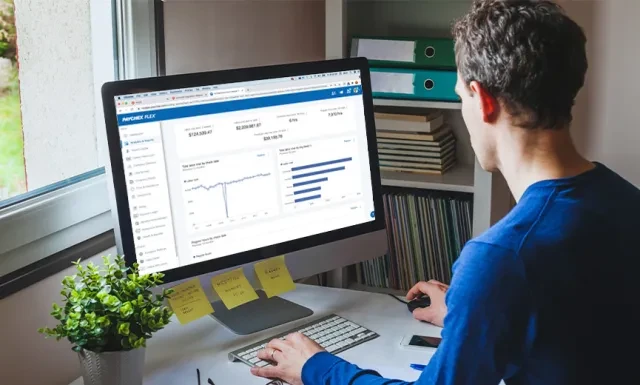- HCM
- Artículo
- Lectura de 6 minutos
- Last Updated: 10/05/2016
Use Workforce Analytics to Drive Strategic HR Decisions

Table of Contents
To make tactical human resource (HR) decisions that positively shape your company, make Big Data your friend. Workforce analytics — which apply statistical models to worker-related information — give companies of all types the ability to derive insight from selected HR parameters. Big-picture planning can arise from qualitative and quantitative study of factors such as hours worked, employee status (full-time vs. part-time), employee engagement, level of performance, absenteeism, overtime, rate of turnover, and efficacy of new-hire orientation.
To get a feel for the extent to which U.S. businesses use workforce analytics, we conducted a nationwide survey in September 2016. It polled 596 HR leaders in a wide range of industries; from firms with just a few employees to very large companies with workforces exceeding 1,000. Respondents were HR managers, HR supervisors, HR directors, vice presidents of HR, or chief HR officers. The results they provided are provocative.
Bigger companies more likely to use analytics
Not surprisingly, the bigger the company, the more likely its leaders are to use HR analytics. Overall, the survey found that 72 percent of respondents use analytics to drive business decisions vs. 28 percent that said they do not. But in companies with fewer than 500 employees, 66 percent use them and 33 percent don't. For companies with 500+ employees, 79 percent rely on analytics and 21 percent do not.
The survey found that the primary reasons HR leaders crunch their data are to learn about:
- Employee status (full-time vs. part-time);
- Hours worked;
- Top talent;
- Low performers; and
- Employee engagement.
Of those who use company HR statistics, 66 percent say they use them to make more informed business decisions, 23 percent to justify HR decisions to top executives, and 10 percent to help them communicate more effectively with employees.
Data source, type vary
Companies that were surveyed obtain their HR data in a number of ways. Half report using a software platform that generates statistics. Twenty-eight percent say they manually create their data through Microsoft Excel or another program. A few respondents — 14 percent — said their company has a proprietary system that yields HR analytics. And eight percent indicated they have a vendor dedicated to providing data analysis.
But not all data are comparable. Some figures are descriptive, presenting raw numbers in summarized form. Prescriptive data provide intelligent recommendations for actions. Predictive data forecast what may happen in the future. Interestingly, survey respondents ranked descriptive data as the most important to meeting business goals. Thirty-nine percent put top value on prescriptive data, while just 15 percent considered predictive data most valuable.
Benefits of data analytics in HR
All survey respondents said they found value in analyzing HR statistics: knowledge without bias. Here's a sample of responses to the question, "What do you see as the biggest benefit of using data analytics in your role?":
- "It helps me make informed decisions in an ever-changing marketplace"
- "It makes analyzing employee trends less difficult"
- "Provides an overview of the bigger picture that's sometimes difficult to see"
- "It allows me to foresee labor needs based on factual trends"
- "Reliable information to determine actionable strategies"
- "It helps me to pinpoint problem areas and address them before they get out of hand"
- "Prove to the executives that our decisions are founded by data"
- "Understanding the direction we are moving in and seeing where we can improve"
Hard facts help HR leaders zero in on specifics. At the same time, they gain a big-picture view from which to base long-term workforce strategies.
If your company doesn't yet use HR analytics, the survey results show that it's worth considering. Analytics can guide strategic personnel decisions, give your firm an edge over the competition, and solve staffing dilemmas. In short, analytics can elevate HR's contribution to the success of the business.
Tags








